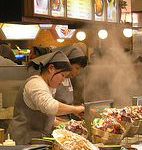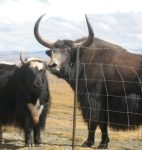The milk safety scandal that is sweeping China has brought melamine, a previously obscure chemical, to public attention. By September 26, contaminated milk had sickened 53,000 babies and killed four. It is hard to believe that this white organic powder, used in the production of plastics, glue, fire retardants and fertiliser, was added to baby milk formula. A toxic chemical, shown in animal tests to cause kidney failure and death, has cast a shadow over the lives and futures of thousands of innocent children. Three years ago hundreds of babies were found to be consuming fake milk powder with no nutritional value. Now we have yet another case of babies put in danger by their food.
More shocking is that when quality regulators carried out tests, products from 23 dairy firms, including household names Mengniu and Yili, contained melamine. Products from manufacturers involved in the contamination scandal, from the provinces of Guangdong and Qingdao, were exported to Bangladesh, Burma, Yemen, Burundi and Gabon.
Melamine is not a regular food additive, and its appearance in products made by Sanlu and other firms indicates criminal behaviour. But should government-approved food additives be trusted either? The large-scale use of food additives may increase production to some extent, but it has a significant impact on quality, and some of these foods may be a danger to public health. Pigs that used to take a year to reach maturity now take only four months, while hormones are used to ready chickens for slaughter in only 45 days. People used to be confident that herbivores, such as cows and sheep, would not be fed additives, yet the quest for greater profits mean that these animals are now fed additive-laden chicken feed and leanness enhancers.
Chemical additives are a threat to food safety. Bleaching agents in flour, antioxidants in cooking oil and preservatives in cakes are all pose dangers to health. The chickens, ducks, geese, pigs, fish, shrimp, turtles, shellfish, cows and sheep that are raised in artificial environments are all treated with hormones, leanness enhancers, tranquilisers, colourings, fertiliser and even contraceptives: substances that are not found in the wild. Which additives are used to bring the protein and starch content of processed meat up to standard? And are they safe? Only the manufacturers know, and they are not telling us.
We must ask why these dangerous additives are so common, and we need to look at the actions of both manufacturers and consumers.
Manufacturers aim to make money: they do not have to consume their own products, so they can add anything that increases their profits. The addition of nitrogen-rich melamine – under the name of “protein powder” – to Sanlu milk and milk powder increased the appearance of protein content during quality checks, which use nitrogen levels to measure protein content. The addition of urea to pig feed has been proposed, even in some textbooks. Previously farmers used to feed pigs fertilisers; now, they just give the animals raw chemicals. After all, the farmers aren’t going to eat their own products; there is a separation from the consumers.
A lack of awareness on the part of consumers has allowed this use of additives to become so widespread. Consumers like unnaturally lean meat, so manufacturers add leanness enhancers, and consumers pay the price with their health. Consumers prefer fresh-looking cucumbers, so additives, including contraceptives, are used to create that appearance. Consumers like white flour, so they get flour with talcum powder and phosphor added. But why do people prefer pure white bread? Flour is naturally darker because of the seed casing, not the pure white you see in the supermarket. Unrealistic expectations have allowed additives to take over the food chain.
The demand for high-quality, low-cost goods is prompting manufacturers to provide unsafe foods. Doing away with additives and using traditional production techniques takes longer, requires more manpower and results in products that are much harder to sell. When I tried to persuade farmers in east China’s Shandong province to raise cows without hormones, fertiliser or leanness enhancers they received 300 to 500 yuan (US$44 to $73) less per head on the market. The farmers gave up and went back to using additives. In Europe and the United States farmers have even fed animal organs to cows, turning herbivores into carnivores and giving rise to illnesses such as Bovine Spongiform Encephalopathy (“mad cow disease”). The South Koreans are protesting against imported beef, but in China not an opposing voice is heard.
It is time for government action on this issue. The authorities need to make clear what substances may be added to animal feed or foodstuffs, with limits on quantities and a strict enforcement and punishment regime. On this occasion the General Administration of Quality Supervision, Inspection and Quarantine has cracked down hard, impounding products that have not yet left the factory and working with other authorities to recall or destroy those already in the supply chain. Those firms that had been classed as “Famous Chinese Brands”, or were exempt from testing, have had that status revoked. The government has taken a firm stance on food safety. But if we want to prevent this happening again, the wisest option is to allow scientists and the media to guide consumption by telling the public the truth about food manufacturing and reducing the use of additives in food.
Jiang Gaoming is a professor and Ph.D. tutor at the Chinese Academy of Sciences’ Institute of Botany. He is also vice secretary-general of China Society of Biological Conservation and board member of China Environmental Culture Promotion Association. He is known for his concepts of "urban vegetation" and allowing damaged ecosystems to recover naturally.
Homepage photo by Sam Ose / Olai Skjaervoy




